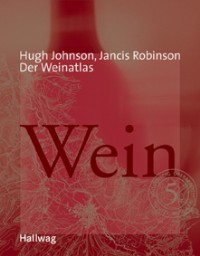 The 5th edition of Hugh Jon's Wine Atlas has just been launched on the market in the old format, but with a completely new layout. Of course, it would hardly have been a problem for the British itinerant preacher of wine to bring the tome up to date on his own, after all, he is used to writing tomes. This time, however, his family put a spoke in his wheel. He had to promise not to tackle such a major project again on his own.
The 5th edition of Hugh Jon's Wine Atlas has just been launched on the market in the old format, but with a completely new layout. Of course, it would hardly have been a problem for the British itinerant preacher of wine to bring the tome up to date on his own, after all, he is used to writing tomes. This time, however, his family put a spoke in his wheel. He had to promise not to tackle such a major project again on his own.
And the new atlas was to be a major project, because it was not done with a quick read over and a few small changes. In no time has the wine world changed as rapidly as in the last 10 years. Many a country that would never have been associated with quality viticulture at the beginning of the 1990s is now pushing its way onto the international markets with remarkable wines. But even in the established producer countries of the old and new world, viticulture often gained importance in zones that had previously received little attention - or spread into completely new areas.
So Johnson asked his colleague and friend Jancis Robinson to join him. The columnist and wine correspondent of the Financial Times also knows a lot about writing thick wine books. Her two-volume Oxford Wine Lexicon is a milestone among all publications on the subject of wine, just like the standard work "Vines, Grapes, Wines", which was already published in 1987.
Thus, the new atlas can also boast an enormous wealth of information. Almost all of the texts have been completely revised and updated, and all of the maps have been redrawn. Italy, Spain and Portugal - the European wine-growing countries with the most rapid development - have been given considerably more space than in the 94 edition. But Eastern Europe, the Eastern Mediterranean and Northern Africa are also given relatively detailed consideration. Overseas, it is above all Canada and Argentina that have gained noticeably in importance, but there have also been significant additions. Japan and a page on the rest of East Asia are completely new additions.
Bordeaux, Burgundy, the northern Rhone and - unfortunately - Germany saw the fewest changes. The texts on the German wine regions (and occasionally also on the grape varieties) still contain some inaccuracies and half-truths that sometimes mislead rather than inform. The fact that the Ahr is hardly mentioned is also a clear indication that German red wine is still not taken seriously.
But these are blemishes that can only slightly tarnish the overall picture. Over long stretches, the atlas inspires both in terms of content and through the lively and unpretentious writing style that is characteristic of both authors. Together with the large introductory section, which contains quite detailed chapters on the history and practice of viticulture and wine production, climate and soil influences, biology, technology, tasting, storage and enjoyment of wine in any form, the book is an indispensable and unique standard work for every true wine lover - and, due to the profound changes, also for owners of an older edition.